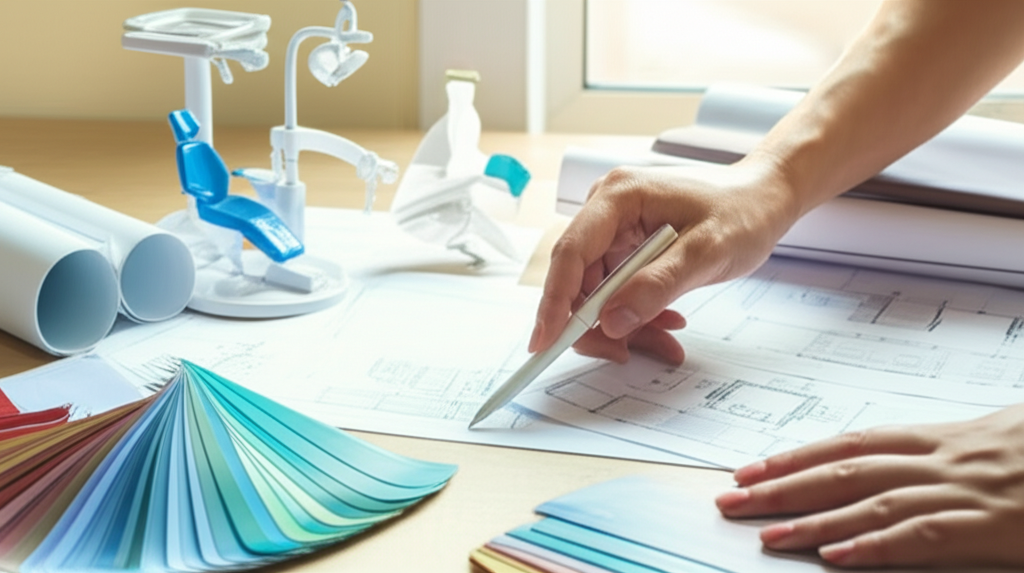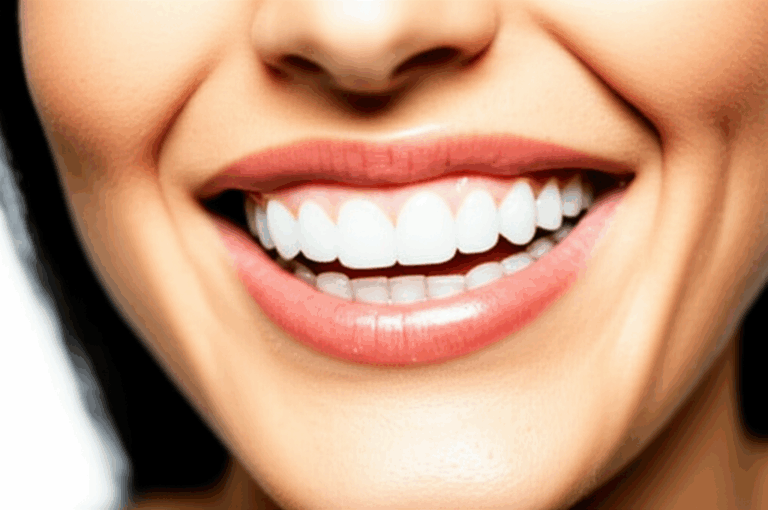
How to Design a Dental Clinic: The Ultimate, Compassionate Step-by-Step Guide
You have a dream: open a dental clinic that’s both state-of-the-art and so welcoming that patients actually look forward to visiting. Maybe you’re a dentist itching to build your own practice, or maybe you’re a manager tasked with a renovation. But where do you start? What actually makes a dental clinic work—functionally, aesthetically, and legally? And let’s be honest—with all the design options and regulations out there, it’s normal to feel overwhelmed.
You’re not alone.
Countless dentists and practice owners have the same questions. The good news? With careful planning and the right help, you can make a clinic that makes patients happy and helps your team work better. Let’s go over everything you need—from big ideas to small details—so you feel ready and in control at every step.
In This Article
Here’s what you’ll learn in this guide:
- Why Good Dental Clinic Design Is Important
- Deciding What Kind of Clinic You Want
- Step-by-Step: Planning and Building Your Dental Clinic
- What a Patient-Centered, Practical Clinic Really Looks Like
- Designing Every Important Room and Area
- Making a Positive, Memorable Patient Experience
- Using Technology (and Keeping Up with Changes)
- Figuring Out Costs and Good Investments
- Your Takeaway: Next Steps to Design Success
1. Why Good Dental Clinic Design Is Important
Let’s start with a common question: Does design really matter?
Yes, it does. Think of your clinic’s design like the base of a house. If it’s good, everything else—quality of care, staff happiness, word-of-mouth—has a better chance to grow. When a clinic looks modern, feels welcoming, and works smoothly, both patients and staff notice.
Why Design Matters
- First Impressions Stick. Patients often judge quality by the look and feel of your office. Studies say 80% of people care about how clean and nice a dental clinic looks when choosing a dentist.
- Smooth Workflow = Better Business. Clinics built for good flow can cut waiting times from about 15–20 minutes to just 5–10.
- Staff Happiness & Production. Good layouts mean fewer aches, injuries, and a happier, quicker team.
- Legal Protection. Good design helps you follow rules (like ADA, OSHA, HIPAA) and keeps away big fines or trouble.
- Ready for the Future. If you design smart, you can handle new tech or changes in dentistry easily and save money over time.
2. Deciding What Kind of Clinic You Want
Before you pick cabinets or wall colors, ask yourself the most important questions:
Who Are You Designing For?
Every practice is different, and your design should match what you want.
Know Your Niche
Are you a general dentist, an orthodontist, a kids’ dentist, or helping a special group? Your focus changes things like your waiting room and what tools you need.
Think About Your Practice Style
Do you want:
- A busy, fast-moving clinic?
- A special, personal-feeling clinic?
- A kid-friendly, playful space?
- A natural or tech-heavy clinic?
Each needs different design things.
Know Your Surroundings
Think about who will visit:
- Are you close to schools or older people?
- How much parking is needed?
- Does your area need two-language signs?
Plan for the Future
Leave extra space for more rooms, new tech, or other needs later—even if you don’t need them now. Planning early saves worry and cash later on. If you’re redoing an old office, ask: Will you want things like same-day dental crowns or digital scans in the future?
3. Step-by-Step: Planning and Building Your Dental Clinic
Designing a clinic takes a team. Here’s how to get from ideas to opening day.
Step 1: Gather Your Team
- Dental Architect or Designer: Knows dental codes and best layouts (not just “making it look nice”).
- General Contractor (Knows Healthcare): Used to health codes and quick timelines.
- Dental Equipment Supplier: Helps with everything from dental chairs to X-ray devices.
- IT and Tech Expert: Makes sure your clinic is set up for digital dentistry and keeps your info safe.
- Financial Advisor or Bank: Knows how to fund dental practices and can help with planning for extra costs.
Step 2: Pick Your Location Carefully
Things to Think About:
- Location matters. Good visibility, easy to get to, and close to your patients are all important.
- Zoning and Rules: Make sure your location can be used for a dental clinic.
- Is the space new or old? New spaces give you more freedom, but old ones might be cheaper—or have problems hiding.
Step 3: Make Your Budget and Get Money
- Usual cost: $150–$450 per square foot for inside work.
- Tools: $100,000–$500,000+ depending on tech and size.
- Other costs: Add 15–25% for fees (permits, designers, others).
- Check out loans for dental practices and always save a little extra, just in case.
4. What a Patient-Centered, Practical Clinic Looks Like
Design isn’t just about being good-looking—it’s about making sense. The best clinics care about patient comfort and staff working well together.
Make the Patient Journey Easy
Imagine walking in as a patient. The easiest experience is:
Tip: If you can, keep “well” and “sick” patients on different paths. This got even more important after COVID-19, with more attention on safe, less crowded spaces.
Ergonomics: Staff Health Means Better Care
- Helper’s Dentistry: Set up treatment rooms so dentist and assistant can work side-by-side, not stretching.
- Tools Nearby: Put tools and supplies close at hand, so there’s less walking or reaching.
- Basics: Use chairs and work spaces you can raise or lower; soft floors help reduce sore joints.
Infection Control & Following the Rules (OSHA, HIPAA, ADA)
How does this look?
- Design your cleaning room for one-way flow—dirty to clean only, to cut cross problems.
- Build restrooms and doors wide enough, and easy for everyone to use.
- Make private rooms quiet and protect patient privacy on computers.
- Stay up to date on CDC, OSHA, and ADA checklists.
5. Designing Every Important Room and Area
Every bit of space matters. Here’s a quick room-by-room list to help you check your plans.
A. Reception & Waiting Area
- First Impressions Count: Use calm colors, soft chairs, and natural sunlight.
- Digital Check-In: Tablets or kiosks make signing in fast.
- Charging & Fun: Have stuff for kids or adults—like books, screens, or relaxing music—waiting feels shorter.
- Branding: Add your logo or special pictures to help people remember your clinic.
B. Treatment Rooms
- Size and Layout: Most are about 10’x12′ (bigger for special care).
- Tech: Monitors, X-ray, and scanner tools should fit in easily. Keep cords hidden.
- Patient Comfort: Big windows and good dental chairs help patients feel calm.
C. Sterilization Center
- One-Way Flow: Mark clear dirty and clean areas.
- Placement: Keep cleaning machines close and easy to use.
- Water and Air: Plan for drains, hot water, and fresh air.
D. Consultation Room
- Private and Calm: Make it quiet and comfortable—people talk about big choices here.
- Learning Tech: Screens and models make explaining easier.
E. X-ray / Imaging Room
- Safety: Follow laws for keeping out radiation.
- Space: Don’t squish in equipment; leave space to move, and plan ahead for bigger machines.
- Tech: Make sure computer systems are ready for digital images.
F. Dental Laboratory and Storage
Working with a digital dental lab or someone local? Leave room for shipping things or in-house jobs. Keep storage areas dry, easy to get to, and safe.
G. Staff Lounge and Offices
- Breakroom: Cozy chairs, a fridge, microwave, and lockers really help staff feel good.
- Admin Areas: Away from patient areas, with lockable cabinets and computer space.
6. Making a Positive, Memorable Patient Experience
Don’t forget the “soft” side—color, light, sound, and art can turn a stressful visit into a relaxed one.
Color Choices
- Blues and Greens: Make people feel calm and clean.
- Warm Colors: Make it feel friendly (great for family or kid clinics).
- Don’t Use Too Much White: Too much feels cold and scary.
Lighting
- Natural Light: Boosts mood. Put treatment or waiting areas by windows if possible.
- Work Lights: Adjustable for close-up work.
- Room Lights: Soft, not harsh.
Nature Touches
Plants or pictures of nature mean less stress. Offices that do this see people feel less worried.
Sound and Art
- Keep It Quiet: Less noise, more calm. Sound panels or soft background music help.
- Art: Pick calming, friendly pictures.
7. Using Technology (and Keeping Up with Changes)
Digital tools are now a must. Good clinics plan for what patients need now and later.
Digital Dental Tools
- Scanners and CAD/CAM: Make things faster and cut out delays.
- Practice Software: Have your plan so networks and server rooms work well and are safe.
- Easy Imaging: Make all treatment rooms link up for quick info sharing.
Patient Tech
- Info Screens: Teach patients in waiting or treatment rooms.
- Touch-Free Systems: Auto doors and no-touch payments help stop germs (important after the pandemic).
- Fun Features: Movies, music, or even VR distract and help time go by.
“Smart” Clinic Tools
- Automatic Controls: For lights, heat, and security—easy and saves effort.
- Safety: Keep patient info and your things safe with cameras and door controls.
Quick tip: Whether you’re working with a dental ceramics lab or using new X-ray machines, plan for extra space and cables for upgrades later. It’s easier and cheaper than ripping out walls after a few years!
8. Figuring Out Costs and Good Investments
Let’s talk money. Building smart, not just pretty, usually means you save more down the road.
Quick Facts:
- Build-Out: $150–$450 per square foot (inside only); new ground-up builds are higher.
- Tools: $100,000–$500,000+, depending on what you need and how many rooms.
- Making Money Back: Clinics with nice spaces and smart layouts can make 15–20% more in the first year or two.
- Staff Design: Ergonomic spaces mean fewer injuries—keeping your team longer and saving on training costs.
Budget Tips
- Don’t skip spending on cleaning or computer setup—these help keep patients safe and clinics running well.
- Add in “extra” costs (fees, permits) and round up. No one likes surprise bills.
- Think about teaming up with partners (like a solid zirconia lab) for better prices or deals.
9. Your Takeaway: Action Steps for Designing a Good Dental Clinic
Let’s pull it all together for a clear, ready-to-use plan. Here’s what to remember:
The Main Ideas, In Bullet Points
- Good design helps better care, happy teams, and keeps patients coming back.
- Know what kind of clinic you want—and design for the people you serve, not just to look fancy.
- Gather your expert team early: designer, builder, tech person, and financial helper.
- Safety and budget matter most. Spend for quality, especially on cleaning and computer systems.
- Patient flow, comfort, and staff health help both happiness and business—never cut corners on safety or how people move.
- Spending smart on new tech helps your clinic work easier and gets you set for the future.
- Don’t forget the “human” touches: sunlight, calm colors, plants, quiet and peaceful spaces.
- Leave space for new tech, more rooms, and new rules—plan ahead so you don’t need big changes later.
Your Next Steps
- Start with a clear vision—write it down!
- Build your team early. Meet at least two or three dental architects or design companies.
- Visit other clinics to see what you like—and learn what to avoid.
- Write a “wish list” and a “must-have” list for your design.
- Check the ADA and local building codes. Staying on the right side of rules keeps you safe.
- Look for ways to make lab work easy—like implant dental laboratory services—to help your clinic do more.
- Set your budget—and add 10–15% extra for anything unexpected.
- Remember: The best dental clinics don’t just fix teeth. They make people feel safe, calm, and eager to come back.
If you want to know how equipment, design, or tech upgrades might fit your dream clinic, talk to trusted dental advisors or labs. They can help you find the best, most patient-friendly plans for your clinic.
Be proud of the care you offer—from the first hello at the desk to the happy goodbye. A well-designed dental clinic is your “silent partner” in giving great care.
Helping you build better smiles—one smart clinic at a time.
References:
- American Dental Association (ADA)
- U.S. Centers for Disease Control and Prevention (CDC)
- Occupational Safety and Health Administration (OSHA)
- Industry reports and studies
Want ideas about common dental problems or more info about treatments? Check out our page on dental problems.
This guide is just for info and inspiration—not to replace legal or building advice. For custom answers, always talk to licensed experts where you live.








